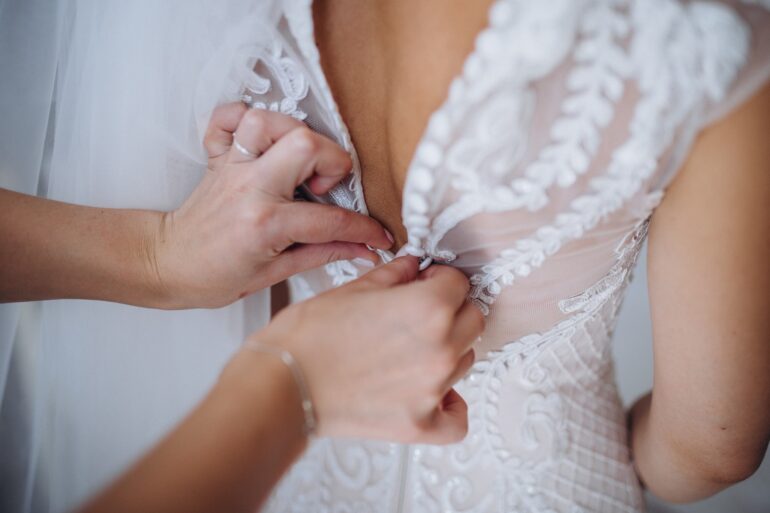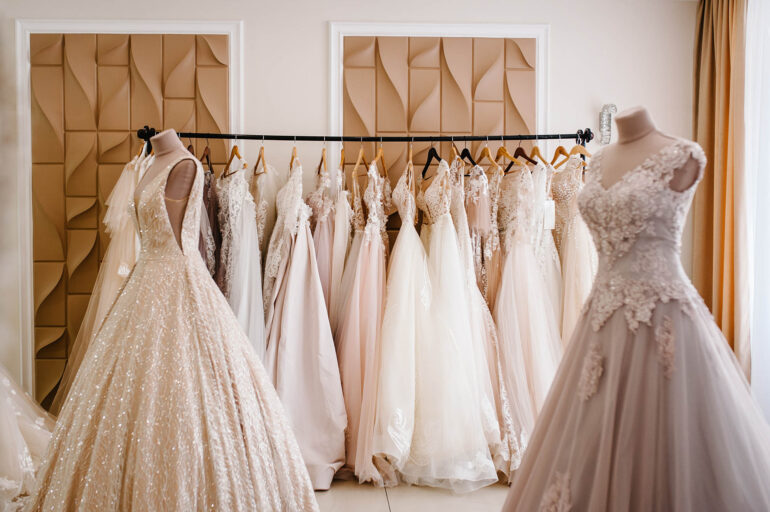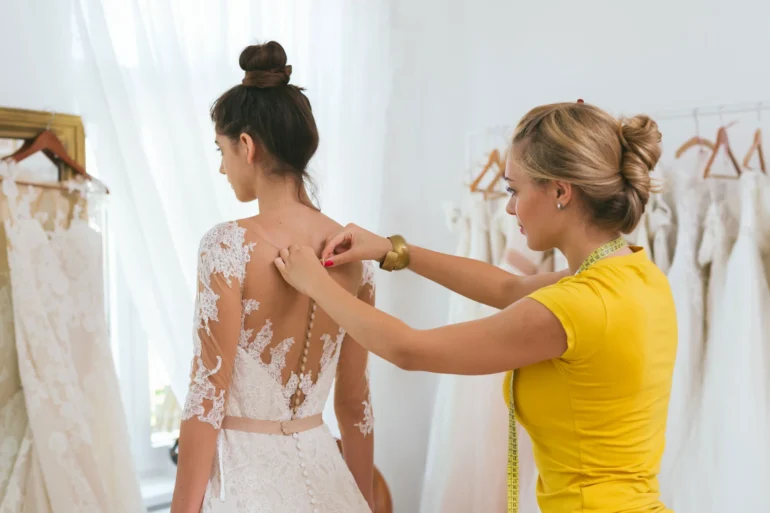Choosing the perfect wedding dress is just the first step; ensuring it fits like a glove on your big day is where bridal alterations come in. However, this crucial phase can be fraught with pitfalls if not handled correctly. This blog post will explore the top five bridal alteration mistakes and provide expert advice on how to sidestep these potential setbacks.
1. Not Allowing Enough Time for Alterations
Many brides underestimate the time required for proper bridal party alterations, leading to rushed decisions and potential disappointment. Here’s how to ensure you give yourself ample time. Begin the alteration process at least three months before your wedding. This time frame allows for at least three fittings, with the final fitting scheduled two weeks before the event. Early planning not only reduces stress but also accommodates unexpected changes, such as weight fluctuations or modifications in dress design.
2. Overlooking the Importance of a Skilled Seamstress

The right seamstress is as crucial as the dress itself. Not all seamstresses have the experience or tools necessary for specific bridal gown fabrics or designs. Look for a seamstress or tailor specializing in bridal wear. They understand delicate fabrics, complex structures, and how a wedding dress should fit your body. Ask for references or examples of previous work before making your choice.
3. Neglecting to Wear Your Wedding Shoes and Undergarments

The shoes and undergarments you wear on your wedding day can dramatically affect how your dress fits and looks. This is a crucial aspect often overlooked during fittings. Always wear the shoes and undergarments you plan to wear on your wedding day to every fitting. This ensures the length and fit of the dress are perfect. Changing these after alterations are completed can lead to discomfort and a dress that doesn’t look quite right.
Different shoes can alter how the dress falls and moves with you, while undergarments can change the shape of the dress. Inconsistent fitting accessories can lead to last-minute alterations that might not be as precise.
4. Failing to Consider Dress Functionality

A dress that looks stunning but is uncomfortable can detract from your wedding day experience. Functionality should never be sacrificed for style. Consider how you will move in your dress and communicate any concerns to your seamstress. They can suggest adjustments like adding a bustle or reducing weight from heavy layers. Remember practical elements like the ease of walking or dancing. For example, too tight a fit may look flattering but can restrict movement and make it hard to breathe.
5. Ignoring Final Weight Changes
Weight fluctuations are common in the months leading up to a wedding. Not addressing these changes can lead to a poorly fitting dress on your wedding day. Keep track of your weight, and schedule a final fitting close to your wedding day. This fitting is crucial to accommodate any last-minute adjustments due to weight loss or gain.
Conclusion
By being aware of these common pitfalls and planning accordingly, you can ensure that your wedding dress fits perfectly, looks stunning, and contributes to a joyous and memorable wedding day.
